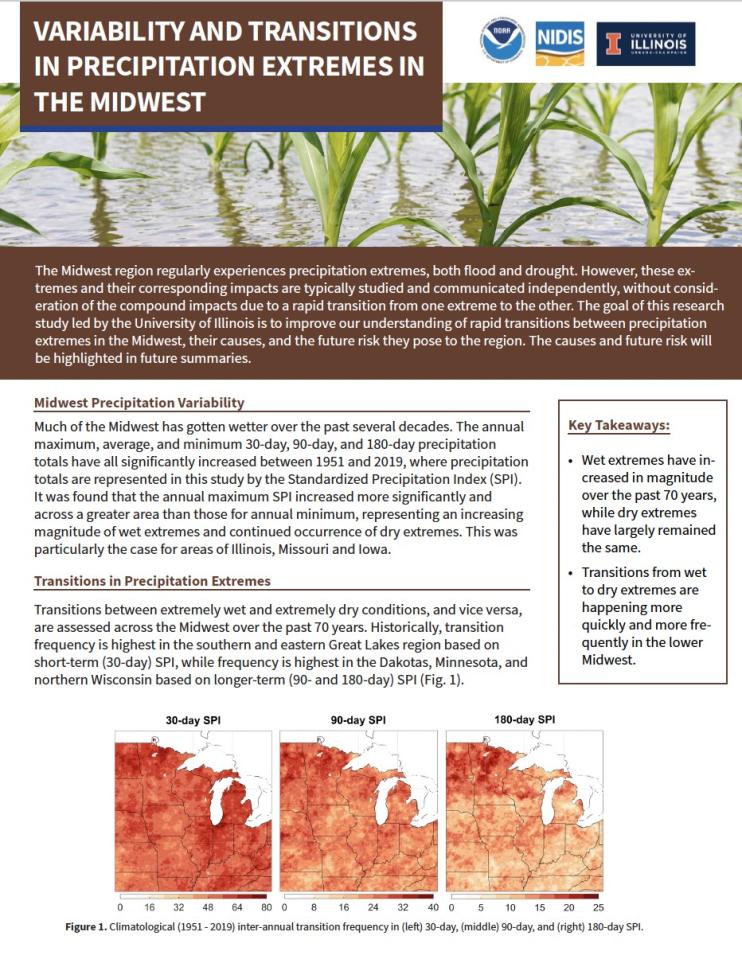Toward an Improved Understanding of Rapid Transitions in Precipitation Extremes and Risk Assessment for the Midwest

The Midwest region regularly experiences precipitation extremes, both flood and drought. However, these extremes and their corresponding impacts are typically studied and communicated independently, without consideration of the compound impacts due to a rapid transition from one extreme to the other (this study will refer to this type of event as a rapid transition in extremes, or RTE). Currently, there exist tremendous knowledge gaps regarding (1) the risk RTEs pose to the Midwest, (2) the large-scale drivers of RTE events, and (3) how future climate change is expected to alter RTE frequency and risk. This project seeks to address these knowledge gaps and improve our understanding of RTEs, their causes, and the risk they pose to the Midwest.
For more information, please contact Molly Woloszyn (molly.woloszyn@noaa.gov).
Research Snapshot
What to expect from this research
The findings from this research will be distributed throughout the Midwest DEWS network (research findings, reports, presentation, etc.).
View a webinar presentation summarizing the results of this research:
Read the peer-reviewed articles resulting from this research:
- Chen, L., T. Ford, and E. Swenson. "The Role of the Circulation Patterns in Projected Changes in Spring and Summer Precipitation Extremes in the U.S. Midwest." Journal of Climate 36 (6), 1943–1956.
- Chen, L., and T. Ford. 2022. "Future Changes in the Transitions of Monthly-to-Seasonal Precipitation Extremes over the Midwest in Coupled Model Intercomparison Project Phase 6 Models." International Journal of Climatology, 1–20.
- Ford, T., L. Chen, and J. T. Schoof. 2021. "Variability and Transitions in Precipitation Extremes in the Midwest United States." Journal of Hydrometeorology 22 (3), 533–545.


